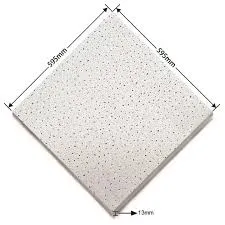Dec . 12, 2024 03:40 Back to list
suspended ceiling t grid system
Exploring Suspended Ceiling T-Grid Systems An Overview
Suspended ceiling systems are widely used in commercial and residential constructions, offering both aesthetic appeal and functional advantages. Among the various choices available, the T-grid system stands out for its versatility, ease of installation, and ability to accommodate various ceiling tiles. This article aims to explore the components, benefits, and installation process of the suspended ceiling T-grid system.
Understanding the T-Grid System
The T-grid system is comprised of a network of metal framing pieces designed in a “T” shape, which supports ceiling tiles. The main components include main runners, cross tees, and wall angles. Main runners typically span the longest distance, while cross tees connect to these runners at regular intervals. Wall angles are installed along the perimeter of the ceiling, providing a finished edge and support for the grid.
This grid system allows for easy access to the ceiling space above, making it particularly beneficial for buildings that require regular maintenance of ductwork, wiring, and plumbing. The space between the ceiling tiles and the structural ceiling enables the housing of utilities without compromising aesthetics.
Advantages of Suspended Ceiling T-Grid Systems
1. Aesthetic Appeal One of the primary reasons for installing a suspended ceiling is to enhance the visual appeal of a space. T-grid systems support a variety of ceiling tiles, including acoustic tiles that absorb sound, decorative tiles that add character, and fire-resistant tiles that enhance safety.
2. Acoustic Performance In environments such as offices, schools, and restaurants, sound management is crucial. The right ceiling tiles in a T-grid system can significantly reduce noise levels, creating a more comfortable atmosphere.
3. Easy Installation and Maintenance The T-grid system is relatively easy to install, requiring standard tools and minimal expertise. Additionally, its modular nature allows for the rapid replacement of damaged tiles or upgrades to different tiles without necessitating a complete overhaul.
4. Concealing Utilities The space between the suspended ceiling and the building’s structural ceiling provides an ideal location for housing wiring, ducting, and plumbing. This allows for a cleaner overall appearance and protects vital systems from damage.
suspended ceiling t grid system

5. Flexibility T-grid systems are highly versatile and can be adapted to various architectural designs. They can accommodate different room layouts and ceiling heights, making them suitable for a wide array of environments.
Installation Process
1. Planning The first step in installing a T-grid system is to plan the layout. Accurate measurements and calculations for the grid’s dimensions are essential. This involves determining the height of the ceiling, the spacing between the main runners and cross tees, and ensuring that they are evenly distributed.
2. Installing Wall Angles Once the layout is established, the wall angles are installed around the perimeter of the room. These angles provide a foundation for the main runners and help define the ceiling's height.
3. Installing Main Runners Main runners are then hung from the structural ceiling using suspension wires. The spacing between these runners is typically 4 feet apart, but specific room dimensions may dictate variations.
4. Adding Cross Tees After the main runners are in place, cross tees are added to create the grid layout. These are inserted at regular intervals to form a grid pattern, ensuring they fit securely within the wall angles.
5. Inserting Ceiling Tiles Once the grid framework is complete, ceiling tiles can be inserted into the grid. Care should be taken to ensure that tiles are fitted snugly and securely in place.
6. Finishing Touches Finally, inspect the entire system for levelness and alignment. Any adjustments should be made before the ceiling is considered complete.
Conclusion
The suspended ceiling T-grid system is an effective solution for elevating the functionality and appearance of a space. With benefits ranging from improved acoustics to easy access for utility management, these systems have become a preferred choice for many builders and homeowners. Their flexibility in design and installation also makes them a practical option for a diverse array of applications, promoting both beauty and efficiency in modern construction. Whether you're renovating an existing space or designing a new one, considering a T-grid system for your ceiling can yield significant advantages.
-
Quality Ceiling Trap Doors & Access Panels | Easy & Secure AccessNewsAug.30,2025
-
Durable Ceiling T Grid Systems | Easy InstallationNewsAug.29,2025
-
PVC Gypsum Ceiling: Durable, Laminated Tiles for Modern SpacesNewsAug.28,2025
-
Pvc Gypsum Ceiling Is DurableNewsAug.21,2025
-
Mineral Fiber Board Is DurableNewsAug.21,2025
-
Ceiling Tile Clip Reusable DesignNewsAug.21,2025







